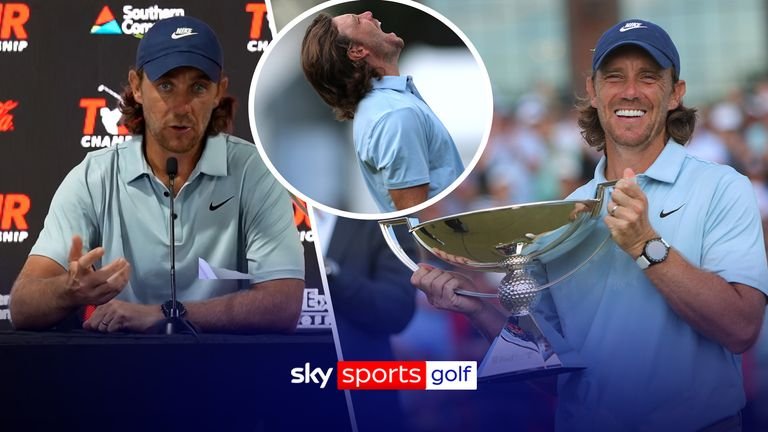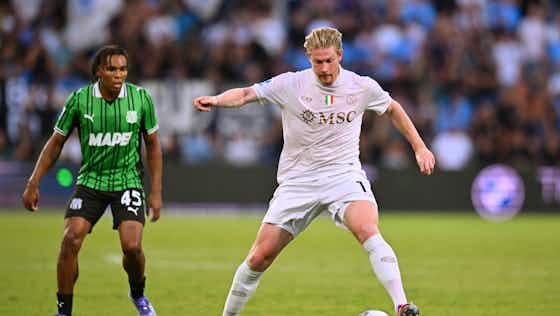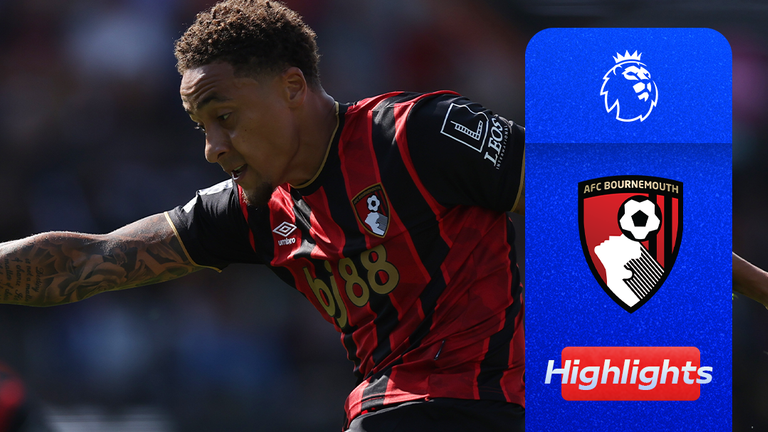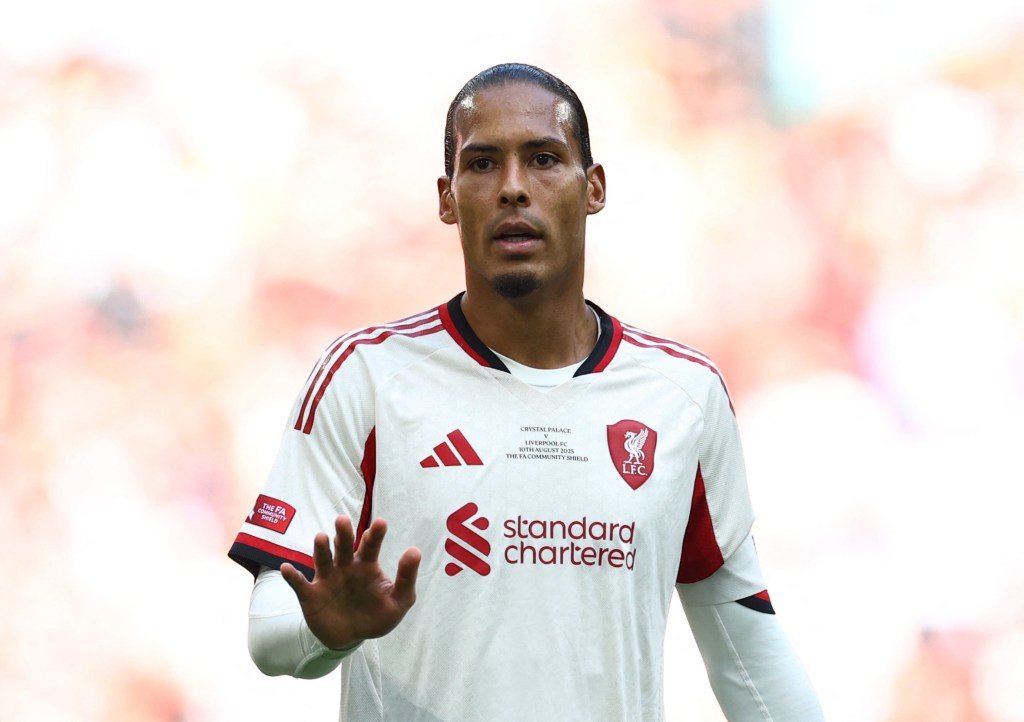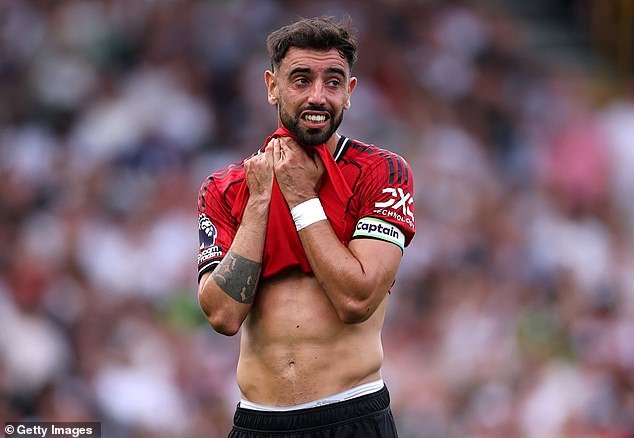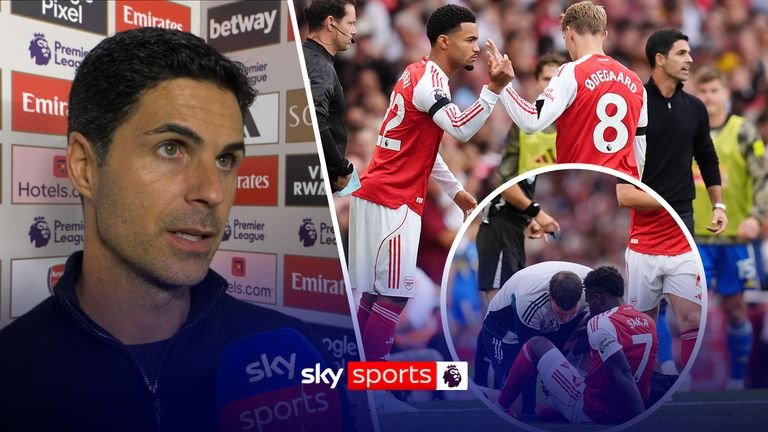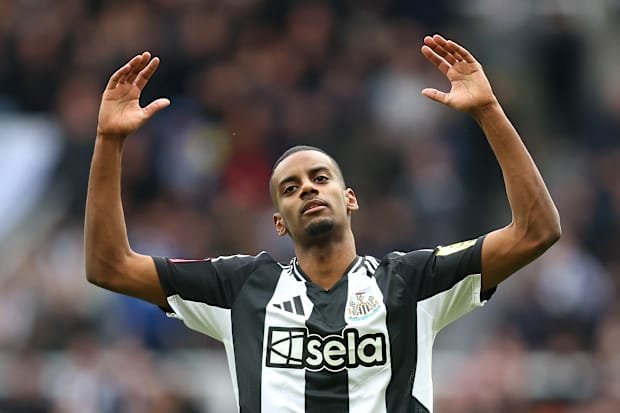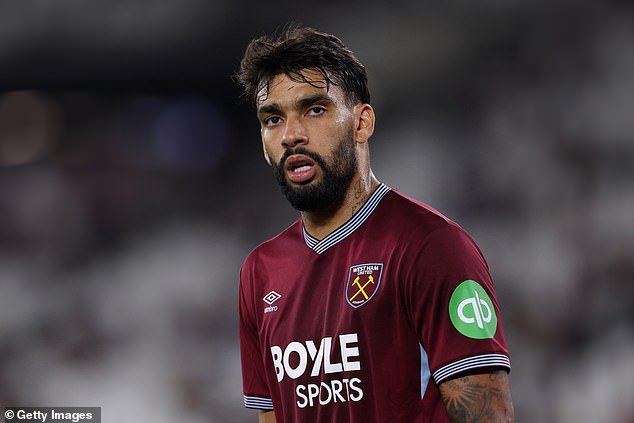Welcome to The Briefing, where every Monday during this season, The Athletic will discuss three of the biggest questions to arise from the weekend’s football in England.
This was the round of matches when a boy who should be getting his feet measured for a new pair of school shoes about now threatened to break a Premier League record several years older than he is.
The other talking points include ‘the most dangerous pass in football’ doing far more harm than good to Manchester City, and we also take a look at the referees’ clampdown on rugby-tackling at set pieces and wonder if it will be here today and gone tomorrow.
When will Max Dowman break a 20-year record?
Records come and go, but the identity of the Premier League’s youngest goalscorer has remained unchanged for far longer than Everton’s James Vaughan could have imagined when he came off the bench, at the age of 16 years and 270 days, and turned home a cross against Crystal Palace at Goodison Park.
That was more than two decades ago – April 10, 2005, to be exact. Or, to put it another way, over four years after Max Dowman, who made his senior debut for Arsenal aged 15 years, five months and 28 days on Saturday against Leeds United, was born.
Vaughan took the record from the evergreen James Milner, who had held it for two and a half years. As for Milner, he knocked Wayne Rooney off his perch, only two months after the Everton teenager scored that goal against Arsenal. It was Michael Owen of Liverpool and – a blast from the past – Tottenham’s Andy Turner before all of that.
Five record breakers
| Player | Date | Age | Fixture |
|---|---|---|---|
|
James Vaughan |
10/4/2005 |
16 years, 270 days |
Everton vs Crystal Palace |
|
James Milner |
26/12/2002 |
16 years, 356 days |
Leeds vs Sunderland |
|
Wayne Rooney |
19/10/2002 |
16 years, 360 days |
Everton vs Arsenal |
|
Michael Owen |
6/5/1997 |
17 years, 143 days |
Liverpool vs Wimbledon |
|
Andy Turner |
5/9/1992 |
17 years, 166 days |
Tottenham vs Everton |
It seems strange to think that the youngest player to score in the Premier League since Vaughan that day is Federico Macheda, who was 17 years, seven months and 14 days when he got the winner for Manchester United against Aston Villa in April 2009.
To highlight how times change, in an interview with The Athletic’s Oliver Kay a couple of weeks ago, Milner told a story about how he spent his first Leeds win bonus on buying “my own phone line, my own Sky (satellite television) box and my own TV” for his bedroom at his parents’ house. Dowman, you imagine, will already be well covered in that respect.
Dowman, who is still at secondary school but has been playing under-18 football since he was 13, could have become the Premier League’s youngest ever player last season – a record held by his Arsenal team-mate Ethan Nwaneri – but for Premier League age restrictions which state that 15-year-olds can only play provided they are 15 by August 31 in the campaign in question.

Max Dowman impressed against Leeds on Saturday (Justin Setterfield/Getty Images)
But becoming the youngest Premier League goalscorer feels close to inevitable, given Dowman has almost the whole of the 2025-26 season to do it and the esteem in which he is held.
“There is a kid here that has zero hesitation and is so convinced that, at 15, he can go and deliver, which I have never witnessed in my life,” Mikel Arteta, Arsenal’s manager, said. “For us, he brings joy, he brings emotion and something else that makes our jobs so great.”
It was an impressive half-hour cameo from Dowman against Leeds, featuring flair, confidence, pace, swagger and ability. The only thing missing was a goal – and you sensed that the rest of the Arsenal players wanted the kid to score every bit as much as he did himself.
At one point, Declan Rice relinquished the opportunity to shoot in favour of passing to Dowman, and there was a split-second later on when you wondered whether the Arsenal players might hand the ball to the teenager after he won the penalty that became their fifth and final goal of the game.
With or without any additional help, that landmark goal is surely going to come.
Why do teams keep playing that pass?
Last season, The Athletic called it “the most dangerous pass in football”.
We were talking about the short, vertical ball that teams use to play out against a high press, generally from inside their own penalty area, often from a goal kick and typically from the ’keeper to a midfield pivot, all with the intention of finding the spare man.
Well, it’s still giving supporters heart palpitations, driving managers bonkers, and serving up goalscoring opportunities on a plate for the other side.
Tottenham Hotspur doubled their lead at the Etihad Stadium in Saturday’s early game after Manchester City got themselves into a tangle, and that evening Viktor Gyokeres should have opened the scoring for Arsenal against Leeds following another mix-up.
It’s a high-stakes game of risk and reward that some managers would rather not play at any stage of the match, let alone in the closing moments.
David Moyes, the Everton manager, threw his arms in the air in a mixture of frustration and despair when, with nine minutes of normal time remaining at Elland Road in Everton’s opening game of the season last Monday, goalkeeper Jordan Pickford chose to play a straight ball to the feet of the retreating Carlos Alcaraz, who had Ilia Gruev, the Leeds midfielder, chasing him down.

Alcaraz tried to turn as he received midway inside his own half but slipped. Gruev collected the ball and, less than 20 seconds later, Leeds were awarded the penalty that decided the game.

For City, in contrast to Everton, this is a central component of how they play under Pep Guardiola, using ‘bounce’ passes to invite pressure and find the free man. The goalkeeper is key to that process, and perhaps we had taken for granted just how calm and capable Ederson was during those moments when it must feel like a net is closing around you.
James Trafford, a former City academy kid signed from Burnley in the summer, found himself in that scenario as Tottenham pushed five players forward in a narrow and high press that snared the home side’s Nico Gonzalez.

Many people will shake their heads at the image above and wonder how the City midfielder, with Pape Matar Sarr tightly marking him and four other Spurs players within 10 yards, is the right pass.
You can’t help but question why Trafford didn’t either knock the ball to John Stones on his right or, better still, go over the top of the press, instead of delivering such a telegraphed pass.

At the same time, Gonzalez didn’t help himself. Typically from a goal kick, the midfielder receiving will arrive on the blindside of their marker, as with Rice in the images below from Arsenal’s game against Chelsea last season.

Gonzalez, however, made himself a sitting duck, and Trafford failed to recognise the danger.

As the camera cut to Guardiola seconds after Palhinha made it 2-0 to Tottenham, the picture said it all.

As for Leeds, they could count themselves fortunate that Gyokeres never realised how much time he had after Martin Zubimendi smothered Anton Stach following another signposted straight pass, albeit this time from a defender rather than the goalkeeper.
The intention, presumably, was for Pascal Struijk to find Joe Rodon via Stach. But Zubimendi read the script, Stach arrived straight, and it was an awkward pass for the midfielder to try to make to Rodon under intense pressure.

It evoked memories – and not good ones – of the way last season’s three promoted clubs (Ipswich Town, Leicester City and, in particular, Southampton) underestimated how difficult it is to execute those patterns against far better quality opponents than they had to deal with in the second-tier Championship.
The phrase “a time and a place” comes to mind.
No more holding on corners… but pushing is fine?
And so the officials’ crackdown on holding at set pieces is a real thing, and Calvin Bassey has become an early victim of the promise to punish players for what has been described as performing a “non-footballing action” that impacts on an opponent’s movement. In other words, a rugby tackle.
Fulham’s Bassey ticked that box at Craven Cottage on Sunday when he wrestled Mason Mount to the floor at a Manchester United corner, with a VAR review of the first-half incident resulting in a penalty award. Bassey, much like Mount a few seconds earlier, didn’t have a leg to stand on at the end of it all, although that didn’t stop the central defender from protesting.

Calvin Bassey hauls down Mason Mount (BBC Sport)
“I still think it’s harsh,” Bassey told Sky Sports afterwards. “I understand why it’s given. (But) I’m trying to stay strong because I know the block is coming. And then I’ve just sort of pulled him over my foot. If it’s someone stronger, I don’t think it looks so bad.”
As it was, Mount was thrown to the floor like a rag doll.
That said, it seemed curious that Luke Shaw got away with doing something not dissimilar to the Fulham forward Rodrigo Muniz on the same corner just a few feet away from the Mount incident. The explanation given was that Bassey committed his foul before Shaw did.
The question with anything like this is whether a stricter application of the rules is here to stay or just a fad that, much like a New Year’s resolution, starts promisingly but quickly falls away.
Grappling at corners and free kicks had been out of control for a while, to the point that the sight of defenders not even looking for the approaching ball while holding onto an opponent with both hands had almost become normalised.
The key for everyone – managers, players and supporters – is consistency around referees’ decision-making, and from Fulham’s point of view, they got a raw deal against United yesterday because of an incident that went against them in the second half of the game.
Replays showed that Leny Yoro, the United defender, pushed Bassey in the lead-up to United opening the scoring, yet the goal was allowed to stand.

Leny Yoro pushes Bassey before United score their goal (BBC Sport)
Pushing is clearly different to holding, or grappling, but it’s a foul all the same.
Coming up
- Only one place to start: Newcastle versus Liverpool on Monday night. Always a lively fixture, this latest instalment promises to be compelling viewing given the absence of Alexander Isak. His name will dominate the build-up after being at the centre of a messy and bitter transfer saga involving the two clubs.
- It’s the second round of the Carabao Cup this week, the entry point for the 11 Premier League clubs not involved in European competition this season. Manchester United travel to Blundell Park, the home of Grimsby Town, on Wednesday. Grimsby are currently fifth in League Two and unbeaten in the fourth tier after five games. In short, it’s the last sort of fixture United need right now. Wolves and West Ham — the bottom two in the Premier League after the season’s first two weekends — would probably say the same about their meeting at Molineux tomorrow.
- Maybe we cursed Celtic and Rangers in last week’s Briefing by talking about a “steady improvement” in Scottish clubs’ performances in Europe in recent years. Celtic promptly drew 0-0 at home against FC Kairat in their Champions League qualification play-off, while Rangers pressed the self-destruct button and lost 3-1 to visitors Club Brugge. Celtic’s second leg in Kazakhstan tomorrow still looks winnable, but it’s hard to say the same thing about Rangers in Belgium a day later.
- Let’s not dwell on Crystal Palace’s Europa League/Conference League saga any longer. The bottom line is that their fans have waited a long time for European football, so it would be a crying shame if this proves to be a one-week-and-done affair. On Thursday, last season’s FA Cup winners are in the Norwegian city of Fredrikstad for the second leg of their Conference League play-off tie, holding a slender 1-0 lead. Palace will be hoping this isn’t the last time those supporters get their passports stamped this season.
(Top photo: Max Dowman; Justin Setterfield/Getty Images)

